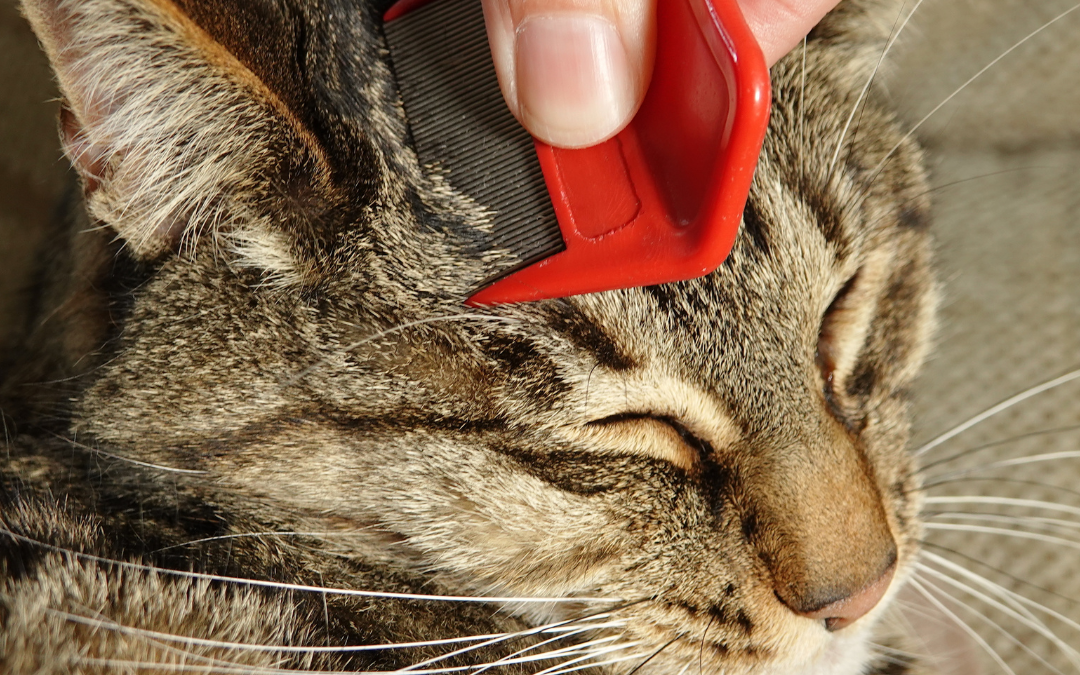
by Renee Aufdermauer | Dec 5, 2024 | Featured, Uncategorized
Our pets bring joy, companionship, and a sense of well-being to our lives, playing a key role in our overall wellness. Whether it’s a wagging tail greeting us at the door or the soothing purr of a cat, pets help reduce stress and enhance our happiness. However, when fleas invade their space—and ours—it can quickly become a source of stress and frustration. Fleas not only irritate our pets, causing itching and discomfort, but they can also become a nuisance for the entire household. Taking proactive steps to manage fleas helps ensure that the wellness our pets provide is not overshadowed by the challenges these tiny pests bring.
While fleas can be a challenge, there are effective, budget-friendly, and non-toxic ways to tackle the problem. Fleas not only discomfort pets but can also impact human health and the home environment. Thankfully, with consistent effort and the right approach, you can control fleas without resorting to expensive or harmful treatments, keeping your pets and your home a haven of wellness.
Understanding Fleas and Their Lifecycle
Fleas are small but tenacious insects that thrive in warm, humid environments. They go through a complex life cycle with several stages, including eggs, larvae, pupae, and adults. Each stage can resist typical insecticides, which is why it’s important to address fleas at all stages of their life cycle to fully eliminate them. According to the CDC’s guidelines on flea control, a comprehensive four-step process is the most effective way to manage a flea infestation.
The Process to Manage Fleas in Your Home
Sanitation:
Thorough cleaning is the first and most important step in controlling fleas. Fleas and their eggs can hide in pet bedding, rugs, carpets, and even along the edges of walls. To break the flea life cycle, wash all bedding, rugs, and pet bedding in hot water, then vacuum thoroughly, including floors, carpets, and areas along walls. Sweep hard floors and vacuum often to pick up any stray fleas or eggs. This helps to reduce the flea population in your home without relying on toxic chemicals.
Pet Treatment:
It’s essential that every pet in the household is treated. Start by bathing your pets with soap and water to gently kill adult fleas. After the bath, use a flea comb to remove any remaining fleas, paying close attention to the face, neck, and area in front of the tail. Be sure to consult with your veterinarian to choose the best non-toxic flea treatment for your pets. There are many natural flea treatments available that don’t contain harsh chemicals, and your vet can guide you on the safest options.
Home Treatment:
Home treatment should begin at the same time as pet treatment to ensure that the flea life cycle is disrupted. While commercial pest control applicators can provide professional help, there are also natural home treatments available, like diatomaceous earth (food grade), which can be sprinkled around areas where fleas tend to hide.
Follow-Up:
Fleas are tough and resistant to insecticides at various stages of their life cycle. To fully eliminate fleas, you’ll need to follow up with additional treatments. The CDC recommends that you apply two or more follow-up treatments within 5-10 days after the initial treatment. Continue regular vacuuming and cleaning during this period to pick up any remaining eggs and juvenile fleas that might have been missed in earlier treatments.
Fleas are a common challenge for pet owners, but with the right approach, you can manage them without relying on expensive or toxic products. By following the CDC’s four-step process and integrating natural flea control methods, you can protect both your pets and your family from these pesky insects. Regular cleaning, pet treatments, home interventions, and follow-up care are essential to breaking the flea life cycle and keeping your home flea-free.
For more information visit: https://www.cdc.gov/fleas/section-name/index.html
For more local health and wellness information, visit www.tillamookcountywellness.org or follow Tillamook County Wellness on Facebook and Instagram.

by Guest | Dec 2, 2024 | Eat Well, Featured, Recipes
A rich and flavorful chili made with lean ground turkey, hearty beans, and a blend of aromatic spices!
Ingredients
1 teaspoon vegetable oil
1 pound lean ground turkey (15% fat)
⅔ cup chopped onion (about ½ medium onion)
½ cup chopped green pepper (about 1 small pepper)
2 cloves garlic, minced or ½ teaspoon garlic powder
1 can (15 ounces) kidney beans, drained and rinsed
1 can (15 ounces ) great northern beans, drained and rinsed
1 can (16 ounces) pumpkin
1 can (15 ounces) crushed tomatoes
1 can (15 ounces) low-sodium broth
½ cup water
2 Tablespoons packed brown sugar (optional)
1 package taco seasoning mix (1.25 ounces)
To make gluten-free, choose gluten-free options for broth and taco seasoning.
Directions
- Wash hands with soap and water.
- Rinse fresh vegetables under running water before preparing.
- In a large saucepan, heat oil on medium heat.
- Add ground turkey, onion, green pepper and garlic.
- Cook and stir, breaking meat apart until it is brown and vegetables are tender.
- Stir in the beans, pumpkin, tomatoes, broth, water, brown sugar and taco seasoning.
- Bring to a boil. Reduce heat, then cover and simmer for 1 hour.
- Refrigerate leftovers within 2 hours.
Notes
- Broth can be made at home, purchased in a can or box, or made using bouillon. For each cup of broth use 1 cup very hot water and 1 teaspoon or 1 cube of bouillon.
- Use leftover turkey cut in bite-size pieces instead of ground turkey. Sauté the vegetables, then add the turkey with the other ingredients.
- No Taco Seasoning? Mix together 1 Tablespoon chili powder and 1 teaspoon each cumin and oregano. Add some red pepper flakes if you like it spicier.
- This recipe can be made in a 5-quart or larger slow cooker for extra convenience. Put cooked ground turkey mixture and all other ingredients into the cooker, cover and cook on LOW for 7 to 9 hours or on HIGH for 4 to 5 hours.
Recipe from foodhero.org
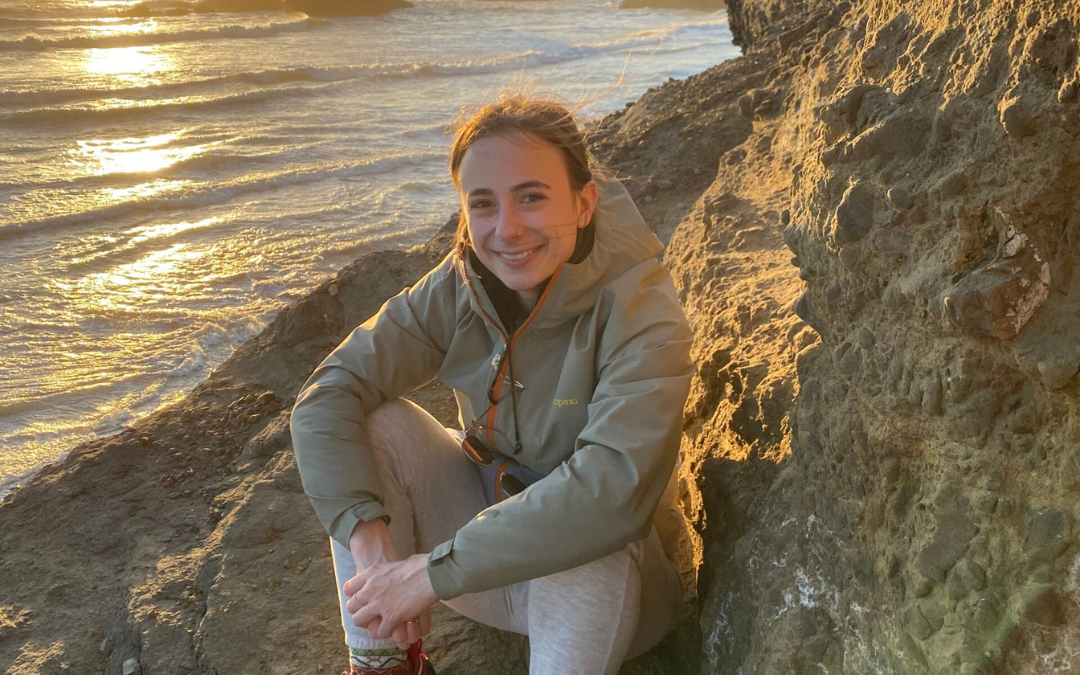
by Guest | Nov 21, 2024 | Featured, Uncategorized, Why I'm In
Written by: Sarah Ermer, MPH, CHES; Prevention Specialist at Tillamook Family Counseling Center
What drew you/your organization to partner with Tillamook County Wellness?
I’m a recent transplant to Tillamook; I moved here at the end of January for my position at TFCC. When I was preparing to move, I was doing some searching online to learn more about health initiatives in the county. I distinctly remember sitting at my parents’ dining room table looking at the Tillamook County Wellness website on my laptop and thinking, “Wow, Tillamook County has a great system for health promotion!” After officially moving and starting at TFCC, I knew I needed to prioritize getting to know as many different people and organizations as I could in order to do my job well. One of the first people I talked to was Michelle Jenck, who is the coordinator for Tillamook County Wellness. My background and current position are well-aligned with Tillamook County Wellness, so she connected me with the Health Promotions committee. The rest is history!
What, if any, changes have you seen come about as a result of this work?
I haven’t been here long enough to say first-hand what larger changes have come about as a result of Tillamook County Wellness, so I’ll share about a moment that stands out to me. One of the first community events I went to was Healthy Kids Day at the YMCA, where the Tillamook County Wellness Access to Physical Activity committee held the Bike Rodeo. I was amazed by the number of bikes and helmets that were available to go home with families! After watching a long line of kids practice bike safety around the parking lot, I have no doubt that even that event alone created positive change.
What have you learned from being involved in this work?
One of my favorite parts of being involved in Tillamook County Wellness, and of Tillamook as a whole, is seeing how the community really does come together to make things happen. I’ve learned a lot about all the systems at play in the area, and the fact that Tillamook County Wellness brings so many of them together is an amazing model for any community that wants to build stronger coalitions. I’ve learned what it really looks like to work as a community!
What are your hopes for this work as it relates to you/your organization?
My work is focused on substance misuse/addiction prevention, and doing that work effectively means looking beyond substance use alone. If we want to prevent young people from drinking or using drugs, we have to be willing to go beyond telling them what NOT to do. It means creating an entire community that supports people who are struggling with their mental health, who need a place to go, or who need positive, healthy activities to help build their confidence. I’ve seen how effective Tillamook County Wellness is in mobilizing people to support health initiatives; I hope that we can continue to mobilize in building support for both physical and mental health access.
What are your hopes for this work as it relates to changing community health in Tillamook County.
Much like my hope as it relates to me/my organization, my hope for our community health is that our collective idea of health and wellness continues to expand. In so many communities, support for different areas of health is siloed. Mental health, physical activity, nutrition, healthcare, social connectedness, financial wellbeing… they all play into our quality of life. I hope that Tillamook County Wellness can continue to be a part of the bridge that connects all these areas of health.
Is there anything else you’d like to share?
Tillamook County has been such a wonderful place to live and work. Thank you to everyone who has been so welcoming! I’m excited to continue to be a part of this community 🙂
For more local health and wellness information, visit www.tillamookcountywellness.org or follow Tillamook County Wellness on Facebook and Instagram.
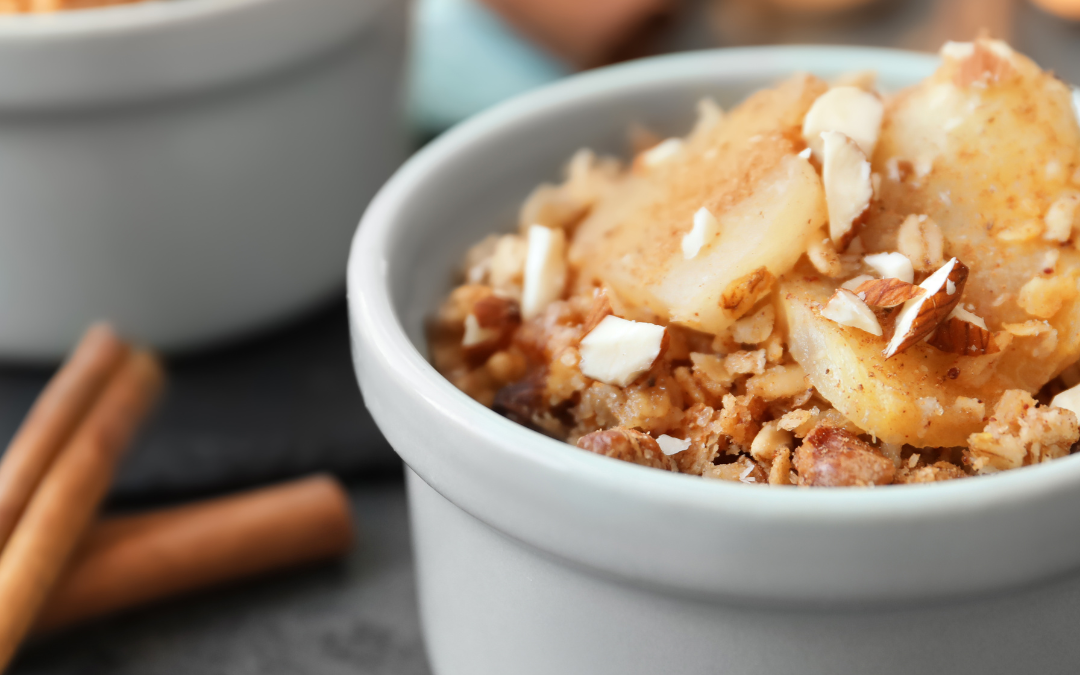
by Guest | Nov 15, 2024 | Eat Well, Featured, Lunch & Snack Recipes, Recipes
Ingredients
Butternut Apple Filling Ingredients:
1 small (about 1 pound) butternut squash
3 medium tart apples, sliced
2 Tablespoons lemon juice
½ cup packed brown sugar
1 Tablespoon corn starch
1 teaspoon ground cinnamon
½ teaspoon salt
Oat Topping Ingredients:
½ cup all-purpose flour
½ cup oats (old fashioned rolled or quick-cooking)
¼ cup packed brown sugar
¼ cup butter, melted
Directions
- Rinse or scrub fresh fruits and vegetables under running water before preparing.
- Heat oven to 375 degrees F. Lightly grease a 13×9-inch baking dish.
- Peel squash and cut in half lengthwise; discard seeds. Cut squash into thin slices.
- In a large bowl, stir together the filling ingredients until well mixed.
- Pour filling into baking dish. Cover and bake for 20 minutes.
- In a medium bowl, stir together brown sugar, flour and oats. Mix in the margarine or butter and set aside.
- Remove baking dish from oven and sprinkle topping over filling. Return uncovered dish to oven.
- Bake 25 minutes longer or until squash and apples are tender and topping is lightly browned. Serve warm.
- Refrigerate leftovers within 2 hours.
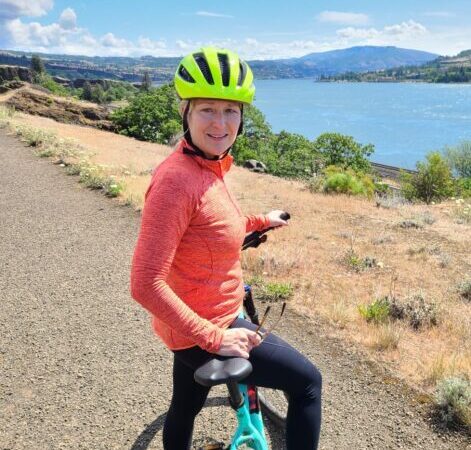
by Michelle | Nov 1, 2024 | Being Well, Featured, Move Well, Why I'm In
Why I’m “in” with Wellness
Michelle Jenck, Well-Being Director, Adventist Health Tillamook and Tillamook County Wellness Coordinator
Wishing for Wellness
I was recently asked how I came to be involved in wellness work. I’d like to say I was a lifelong fitness enthusiast but that isn’t true. As a child, I wanted to be physically fit and athletic but, alas, it was not in the cards for me. Severe asthma left me breathing into a brown paper bag on the sidelines and a debilitating eye condition called amblyopia, (my left eye is nearly blind), meant that, with no depth perception, I was to forever be, the “last one picked for the team.”
During middle school, I was too young to work, old enough to be home by myself but idle enough to have begun getting in trouble (serious, trouble). My saving grace was wandering into a YMCA to kill time after school. I started going to the weight room and pushing weights around. I had no idea what I was doing but kind people showed me what to do and what muscles I was working. It felt so good to feel a sense of control moving my body. I could push heavy things on purpose and muscles would form in places that were once squishy bits. It was like magic.
The best part was how weight training made me feel emotionally. I felt happier and gained a sense of control (something I have learned we need for good mental health, called a “locus of control.”) My self-esteem improved. I could set goals for myself and work to reach them, building successes I never believed possible for myself. I pursued weight training all through high school and was one of a few girls that joined the school’s newly formed competitive power lifting team.
My senior year in high school, I decided maybe I could push my body in other ways and began my first attempts at running. Initially, I “ran” 1-2 blocks and then sat on a curb breathing into a paper bag until my asthma attack subsided enough to slowly walk home. Tenacious and undaunted, I kept after my goal, gradually working my way up to running 2-3 miles at a time, and ultimately up to 6 miles over as many years. Running, even at a slow pace, helped me burn off stress and was a convenient way to get in a quick bout of exercise when I didn’t have time to hit the gym.
Working in Wellness
Through high school, college and into my young adult life, exercise was a staple. I tell people it should be like brushing your teeth; something you do every day without even thinking about it, because it is so ingrained in your routine.
As a stay-at-home mom, I was taking classes at the Tillamook YMCA, grateful to spend time among adults. One day, I made the fateful decision to ask Jeannie Christensen if there was ever going to be a step aerobics class offered at the Y. Like so many things in a small town, the answer was, “why don’t you start one?” Thus began a nearly 30-year career of teaching many different exercise disciplines.
I loved (and still love) teaching fitness classes. It is a way to give back, helping others experience their best life. Over all these years I have seen fitness change people from the inside out. That “locus of control,” it turns out, is an important component of life success and resilience. When we become aware of and gain control over moving our bodies, using our minds, it is very empowering.
The A-Ha Moment
By this time, our oldest son had been diagnosed with autism and our lives were changing dramatically. As we worked with our son to help him develop the ability to regulate his emotions and manage the sensory stimuli causing so much turmoil in his mind and body, I discovered magic could be found in movement. The most effective exercises involved movements that strengthened the parts of his brain involved in balance, spatial awareness and motor planning. How interesting, I thought. The same could be said for teaching a step class.
Teaching adults how to move, while helping our son re-wire his brain with movement, turned out to generate an “a-ha” moment of monumental proportions. As I began to understand how the brain is formed and how it changes with regular physical activity, I began to consider the larger implications of what I was learning. What could this mean for other children? For anyone who wanted to be more physically coordinated, better regulated, smarter and more successful?
Armed with this discovery, I decided to go back to school to pursue a Master of Education in Health & Kinesiology. Graduating in 2012, I used my degree to expand exercise programming at the YMCA, adding Tai Chi: Moving for Better Balance, which over 300 older adults took in 2014. The following year, I was tapped to help lead a community effort to focus on reducing chronic disease in Tillamook County, which led to the formation of Tillamook County Wellness.
My Hopes for Wellness
I am very grateful for my experiences and the opportunity to influence health at both the individual and population level. As I enter my ninth year as coordinator for Tillamook County Wellness, I am looking ahead; or better yet, I am looking further “upstream.” So much of what contributes to wellness can be found between our ears. The mind. The brain. The connection between the brain and the body. This is where wellness starts. And it starts early in life – in the womb, in fact. Nearly 90% of a child’s brain is developed by the age of three and much of that development depends on movement.
My hopes for wellness are that we will begin to prioritize proper movement, nutrition and secure relationships during this critical window of childhood development. Do I have ideas for this? You bet I do and I can’t wait to keep working on wellness!
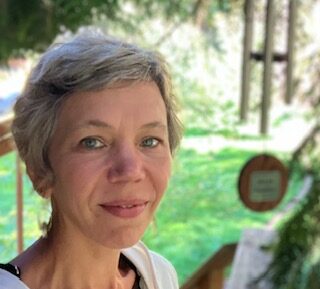
by Guest | Oct 28, 2024 | Being Well, Featured, Uncategorized
…to taking action for breast cancer prevention and healing.
October is breast cancer awareness month. It’s also my birthday month, and I’m happy to say, I’ve come a long way in my healing as I now feel honored to share my birthday month with this awareness as many of us would like to not have to touch it with a 10 foot pole. You see, I’ve learned much about breast cancer from lived experience, both my own diagnosis and one of my sisters. My sister’s story ended with her dying from metastatic breast cancer only 2 years from her original diagnosis. I’m currently 2.5 years out and doing great as I plan to continue to do.
Neither of us were paying enough attention to our risk factors and we had several. There were many factors involved including earlier cancers and radiation treatments, environmental toxin exposures (we all live in a chemical soup world, reducing our exposures and supporting our body’s pathways of elimination are key) emotional and physical overwhelm/high stress, over-nurturing others and under-nurturing the self. Sound familiar anyone? 1 in 8 are the current statistical numbers of breast cancer occurrence among women. Also, did you know? 1 in 100 men are affected. Each story is unique and there are certain things that put each of us in different risk categories.
Knowing our risk factors, how many we have and what we can do to lower our risk factors with lifestyle modification are all within our control. I knew I was in a higher risk category from having had radiation therapy in my early 20’s. I knew I functioned at a high stress level, saw signs of estrogen dominance, was persistently overweight for many years, chronically inflamed and worked nights often as a birth doula plus a few other factors. Yet I just hoped eating organically and not exposing myself to more radiation would keep me healthy. It wasn’t enough. Receiving the diagnosis of invasive ductal carcinoma right after my sister’s passing was a doozy of a hit too, but through my lifestyle adaptions it has ultimately brought me back to my earlier life goal of longevity (living to 100 or beyond!) and living that life in vibrant wellness. Good health has always been a passion of mine, but it’s funny how we can let stress and certain situations lead us to believe we should accept less for ourselves. Ultimately cancer has taught me how to live well again. Thank goodness! However, it was not easy to go through to get myself back on track. I don’t actually recommend it 😉 It is therefore, my pleasure and task to share with others what they can do to ideally avoid diagnosis by steering away from known risk factors and incorporating lifestyle habits that decrease risk factors. I love sharing preventive habits and skills in general for us all (including prevention of other diseases too I’d like to add).
Know your risk factors. How many of these align with you?
Risk factors from CDC
- Being a woman
- Age: most diagnosed after 50
- Having BRCA1&2 genes (genetics can be dimmed or brightened with lifestyle)
- Reproductive history – beginning menstruation before age 12 and menopause after 50 – also – First baby after 30, no breast feeding, no full term pregnancy
- Having dense breast tissue/connective tissue (hard to read in mammograms and needs better lymph movement and movement in general) Ultrasound and thermography** are better at reading dense breast tissue **note that thermography isn’t currently utilized by conventional medicine.
- Having a personal history of breast cancer
- Other breast diseases such as atypical ductal hyperplasia, lobular carcinoma in situ
- Family history of breast or ovarian cancer (with or without BRCA gene) first degree relative; mom, sister, daughter – mother or father side
- Previous treatment with radiation (such as Hodgkins lymphoma also a sign the lymph system needs support)
- Exposure to DES drug – diethylstilbestrol – 1940-1971 – miscarriage prevention (mom and baby at higher risk)
- Not physically active
- Overweight or obesity after menopause
- HRT – hormone replacement therapy and slight increased risk seen from birth control pills.
- Drinking alcohol – risk increases with the more a woman drinks
- Smoking
- Night shift work
I would also add: environmental and food chemical additives that can overload our lymph and endocrine system as well as harm our gut microbiome.
Now to the empowering stuff!
What we can do: Taking action is key!
Eat more whole food plants! Eat more colors, eat seasonally, locally and clean/organic whenever possible. Check out the EWG’s list of clean 15 and dirty dozen to know what produce is ok to buy conventional/clean15 and which are ideal to buy organic/dirty dozen) Visit a local farm and enjoy their produce. They need our business through the cooler seasons too. Add one more vegetable to every meal and one new color a week. Ask about the farm’s growing habits. Find farms that don’t use chemicals. Many practice organic methods but don’t carry the certification yet and they’re happy to answer your inquiries.
Exercise! Move your body in ways that make you happy and feel good. Get moving every day. And this doesn’t mean stressed out running around, no, that’s counter productive. This means, enjoy a walk, hike or bike ride. Prioritize the time to commit to regular movement. You are so worth it! Walk one day, take a movement class another day such as Yoga or Joy Lymph Flow (a class I lead in Rockaway Beach and Nehalem) Tai Chi, Qigong or whatever you fancy, but it should bring ease to your body and time for repose. Turn on the music and dance! A fabulous way to heal many layers and promotes connection and health within the family if you live with others.
Quit smoking and don’t drink alcohol or limit your intake. Mocktails made with herbs are power packed with more phytonutrients that help us stay well and are an actual treat vs. a known risk factor.
Switch to natural household and personal care products. Don’t use anything with “fragrance” listed as an ingredient or chemical names you can’t pronounce or artificial colors. There are so many products out there, it can be overwhelming. Environmental Working Group also has a Skin Deep database listing products that are free from chemicals. It’s not one product that becomes the problem, it’s the many products together, it becomes a toxic load the body can’t handle. Switching to natural cleaners and personal care items actually uplifts our health instead.
Discuss your risk factors with your ND or MD and meet with a health coach like myself for support in making changes to your lifestyle at a pace that works for you to live a life that’s shown to be more preventive in lowering your risk factors and ideally avoiding this disease. I also teach breast massage for self-care and home screening. 3 This article is dedicated to those we’ve loved and let go of too early due to this disease and to those facing it now and in the future. May we all be free, live in flow, know ease and enjoy self care first so we may indeed be well and remain here for others.
Written by Elizabeth Golden Seaver, Health and Wellness Coach, Nehalem, OR and Tillamook County Wellness Coalition Member.
You can reach out to her at: goldenkeywellness.abmp.com, wingforwisdom@gmail.com
Other wellness questions? Email us at info@tillamookcountywellness.org. For more local health and wellness information, visit www.tillamookcountywellness.org or follow Tillamook County Wellness on Facebook and Instagram.






